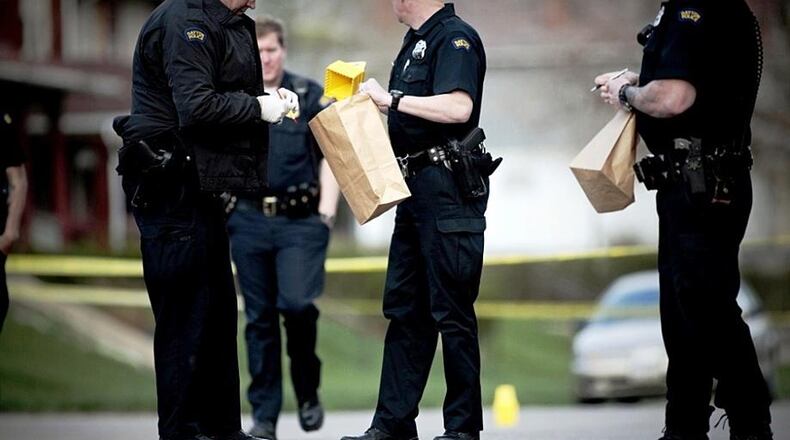What is ShotSpotter and how long has the Dayton Police Department been using it?
ShotSpotter is a system that uses a network of acoustic sensors to identify and pinpoint potential sounds of gunfire and then alerts police dispatchers and officers of their locations within about 82 feet.
The company says the alerts will show a precise dot on a map with the actual recording of the gunfire. A review center can append the alert with other critical intelligence such as whether a fully automatic weapon was fired or whether there are multiple shooters. This process takes less than 60 seconds from the time of the actual shooting to the digital alert popping onto a screen of a computer in the 911 Call Center or on a patrol officer’s smartphone or mobile laptop.
ShotSpotter’s system in Dayton covers about three square miles in the northern part of the city.
The city originally approved spending $205,000 for ShotSpotter’s services in July 2019.
In November 2020, the city approved extending the contract for two more years, at a cost of $390,000.
How many other cities us ShotSpotter?
ShotSpotter is used by law enforcement agencies in more than 130 cities. According the the “Cancel ShotSpotter” website, several cities in Ohio have contracted with ShotSpotter, including, Cincinnati, Columbus, Mansfield, Youngstown, Warrensville Heights, Cleveland and Toledo. Canton also had a contract with ShotSpotter but switched to Wi-fiber’s gunshot detection technology in 2019.
Has it been effective in fighting crime?
The California-based company says more than 80 percent of gunshots are not reported to 911 in cities across the nation, which often means police never show up to collect forensic evidence that can help solve serious crimes.
Dayton’s ShotSpotter system issued more than 1,375 alerts in 2021 and more than 1,860 in 2020.
Police said the system helped officers recover more than 3,900 bullet casings, and the alerts led to about 74 arrests for criminal incidents.
Officials have said the technology can help develop leads, catch criminals, solve crimes and locate forensic evidence.
Dayton police said the area covered by ShotSpotter saw a larger decrease in violent crime than a similar “control area” that lacked the technology.
ShotSpotter says its system is highly accurate, with a “97% aggregate accuracy rate and 0.5% false positive rate for real-time detections across all police department customers.”
The company says this data was independently verified by data analytics firm Edgeworth Analytics.
“We are trusted by police departments in over 135 cities nationwide and have a 99% customer retention rate, indicating that our system works well,” the company said.
What do the critics say?
Citizens claim the gunshot-detection system is an “unnecessary toy” that wastes money, contributes to over-policing and does not make neighborhoods any safer.
Some community members also raised concerns about false alarms. About 370 people signed an online petition in November 2020 asking the city to reject extending its ShotSpotter contract.
Binita Patel, a member of the Coalition on Public Protection, said the technology has the potential to be abused because it records audio via microphones placed in the coverage area.
Police say any reduction in crime for a certain area cannot be solely attributed to ShotSpotter since various law enforcement tools were deployed in the area during the same time frame.
Julio Mateo, who also is a member of the coalition, said ShotSpotter data in Dayton showed that most of the system’s alerts resulted in “dead-end deployments” that waste valuable public resources and have the potential to endanger community members.
About the Author

